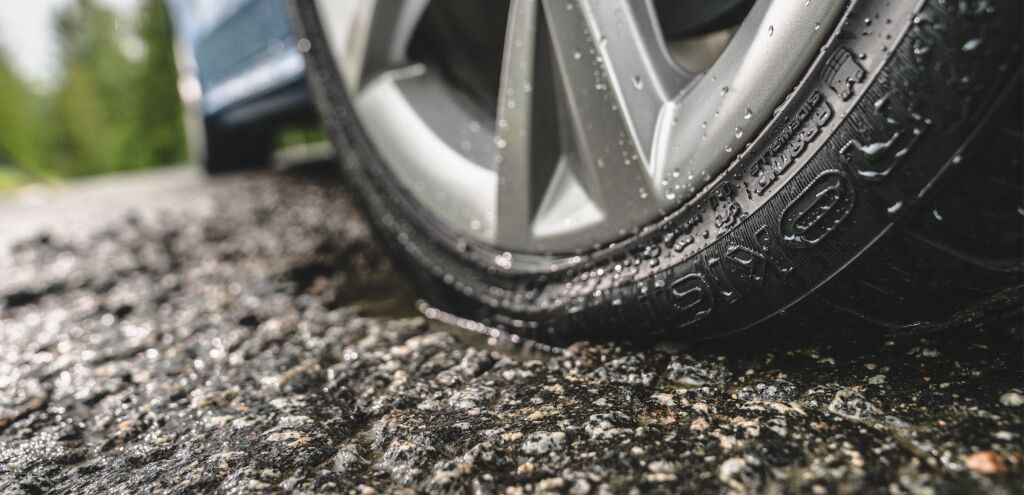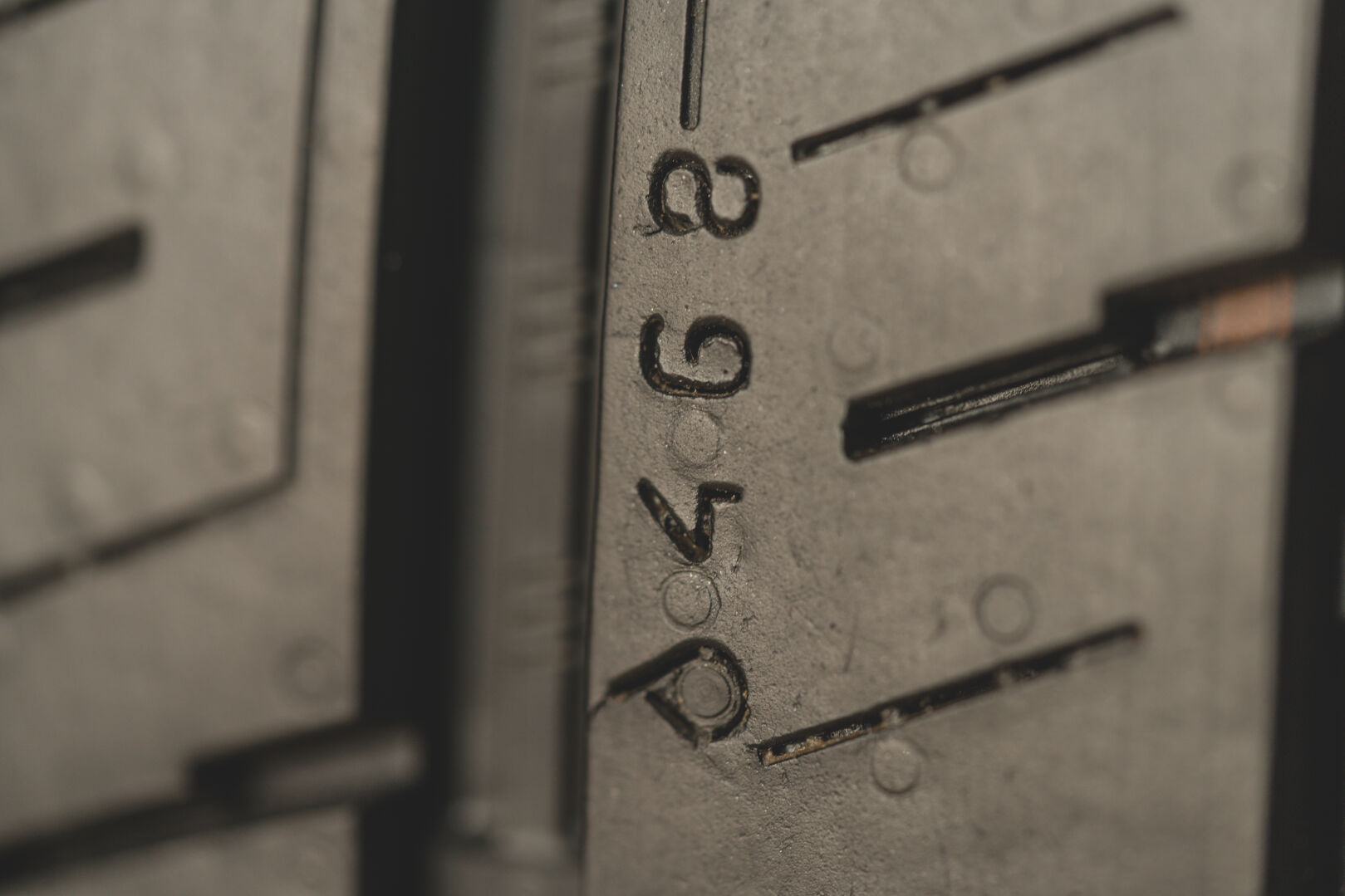
Typically, tire lifespan ranges between 6-10 years, but it's influenced by various factors. Find out how to make your tires last longer.
A variety of elements contribute to how long your tires can effectively serve you on the road, from the quality of the tires themselves to the way you care for them, how you drive, and the conditions you encounter. Understanding these factors can help you to make tires last longer. It is also important to know when it’s the right time to replace your tires, to ensure safer and smoother driving. Contact your local Nokian Tyres dealer for replacement tire recommendations.
Tire life is usually between 6–10 years
Typically, tires have a lifespan of 6 years in service or 10 years from date of manufacture, whichever comes first. Tire longevity is influenced by, for example, the quality of the tire, proper tire maintenance and storage, driving habits, and road conditions. Over time, even without significant use, tires can experience changes in their rubber due to natural degradation. The rubber compound starts to deteriorate as oxygen reacts with it. Also, exposing the tires to strong UV radiation for long periods of time can have detrimental impact on rubber compound over time. It’s recommended to store the tires in a cool, dry place away from direct sunlight.
To know the age of your tires, you can find the manufacturing date on the tire’s sidewall. The manufacturing date is displayed as a four-digit number. The first two digits are for the week, and the last two are for the manufacturing year. However, don’t solely rely on the manufacturing date - you should also look for signs of an aging tire. Signs of an aging tire might include:
- Cracks on the tire’s sidewall. Cracks can appear as thin lines or patterns. If you find any, it’s important to assess their depth and extent. It is easier to notice them when the tires are clean.
- Uneven tread wear. Tires can wear unevenly due to various factors including incorrect air pressure or wheel alignment. You can notice that by inspecting the tire tread.
- Loss of traction and grip. You might experience the steering becoming less responsive, a reduction in braking, and longer stopping distances.
- Tire vibration. If you feel a consistent vibration while driving, it could indicate an aging tire. Vibrating can also intensify as speed increases
How to check tire wear?
To maintain safe driving conditions and to make tires last longer, check the tire wear regularly. It is crucial that your tire’s tread is deep enough, especially in wet and slippery weather conditions. For a quick tire wear check, you can use the 2 € coin method:
- Take a 2 euro coin and push it into the tread groove.
- If you can see the silver rim, the tire is too worn and you should consider replacing the tires.
- Repeat the 2 euro coin test with all four tires of your vehicle.
For more accurate results, take your vehicle to a tire shop and get your tires measured with a tire tread depth gauge. All the latest Nokian Tyres products have a DSI driving safety indicator, which makes it easy to visually check the condition of your tyres by checking the remaining tread depth in millimetres directly on the tread surface in the centre of the tread. When the tread depth is too low, or you can see visible cracks or cuts, it is time to replace the tires.

When checking winter tires’ wear, examine also the number of studs and eventual differences in the quantity of them between tires. Studs impact tire traction on icy surfaces, and uneven wear can compromise their effectiveness.
Nokian Tyres offers guarantees on select products when proper tire maintenance practices are followed. Learn more about our limited guarantees for your set of Nokian Tyres products by checking out our consumer promises section.
Make your tires last longer
With proper tire maintenance, you can significantly extend tire life. Here’s how to prevent premature tire wear:
- Maintain recommended tire pressure. Underinflated or overinflated tires can lead to unequal wear, which shortens tire life. Check your tire pressure regularly, preferably once a month. Make sure to maintain the air pressure levels stated in your vehicle manual.
- Check the balance. Keeping the proper tire balancing contributes to even tire wear. Get your tires balanced always when they’re mounted and if you notice uneven tread wear or vibrations while driving.
- Maintain proper wheel alignment. Misaligned wheels can cause uneven wear and shorten tire life. Check the alignment when changing tires, whenever your vehicle pulls to one side, or when you notice irregular tire wear.
- Drive smoothly. Avoid sharp turns, excessive spinning, and hard braking. Aggressive driving wears tires significantly faster than smooth, gentle, and proactive driving.
- Store tires properly. Keep tires in a cool, dry place away from direct sunlight and extreme temperatures. If possible, elevate tires off the ground and stack them vertically to prevent deformation.
- Rotate tires. Regular tire rotation helps keep tire wear even and extends tire lifespan. Consult the owner’s manual to determine the proper tire rotation pattern.
When to replace tires?
Appropriate tires are crucial, as they impact driving performance and road safety. Proper tire maintenance significantly extends the lifespan of tires. However, consider replacing tires older than six years. You should buy new tires if there are visible cracks or the tire tread is running low. Remember that vibrating tires and poor responsiveness of the vehicle can be signs that your tires need replacing.
Regularly inspect the condition of your tires to ensure an optimal, safe driving experience. Maximizing your tires’ lifespan requires regular tire maintenance checks such as ensuring proper tire pressure and rotating your tires regularly. But with the right tire care, your wheels can safely last you years of service.
Please remember that it is the driver’s responsibility to ensure their tires are safe and suitable for their vehicle and to follow the vehicle’s manufacturer´s guidelines for proper use and maintenance. Consult your closest Nokian Tyres dealer or your vehicle’s manufacturer for specific advice.


